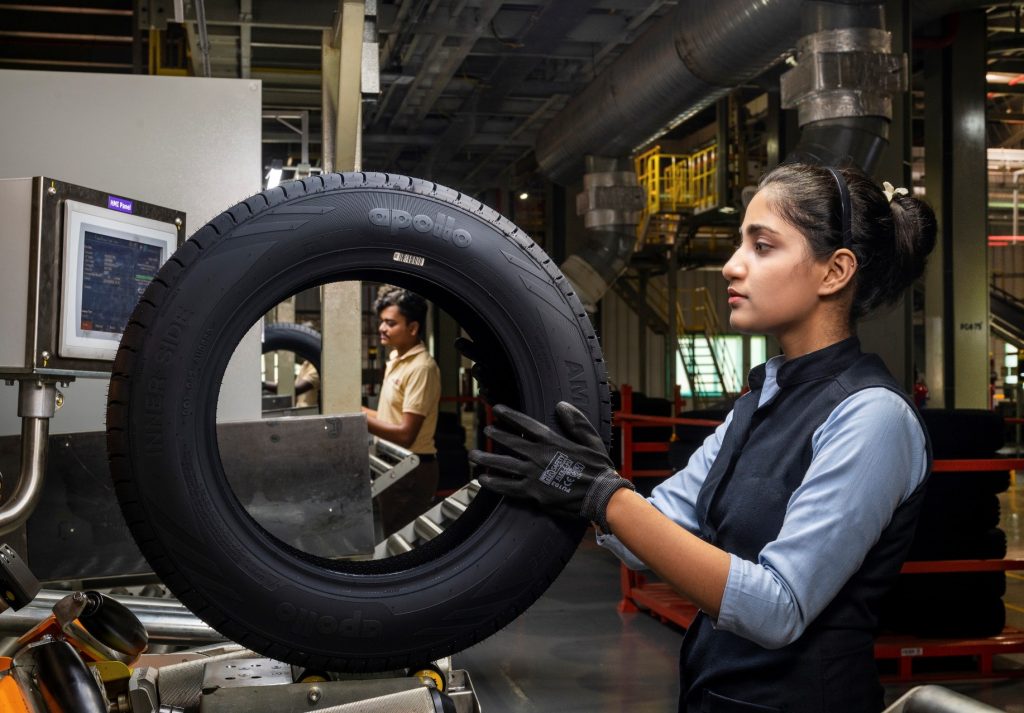In this exclusive op-ed for The Manufacturer, Apollo Tyres’ Neeraj Kanwar looks at how the UK-India Free Trade Agreement (FTA) is less about tariffs and quotas and more about forging an innovation-led partnership that strengthens global value chains, builds resilience, and sets a new model for future trade deals focused on shared capabilities across borders.
Key takeaways:
- The UK-India FTA is about innovation, not just tariffs
- The deal goes beyond traditional trade agreements by embedding innovation, digital trade, and services at its core. It sets a precedent for future trade models that prioritise capability-building across borders rather than simply lowering duties.
- Resilient global value chains are the new priority
- With supply chains fragmented and interconnected, the greatest barriers are coordination and risk management. The FTA tackles these by enabling smoother flows of data, talent, and intellectual property—making resilience a central goal of trade policy.
- A strategic partnership benefits both nations
- India gains access to the UK’s innovation capacity to advance its manufacturing ambitions, while the UK diversifies supply chains and secures access to a high-growth market. This positions the agreement as a blueprint for modern industrial collaboration.
The signing of the UK-India FTA is far more than a simple trade deal. While headlines rightfully focus on the numbers, an anticipated £25.5bn annual boost and a target to double commerce by 2030, its true significance lies beyond the trade balance. After spending decades in global manufacturing, I see this agreement as a blueprint for a new era of trade, one that prioritises partnerships over tariffs.
Rethinking the metrics of trade
For the last century, trade agreements focused on quotas and the volume of goods shipped. Today. That old playbook is obsolete. Modern manufacturing is deeply interconnected, and this agreement reflects that reality.
Manufacturers no longer keep the entire value chain in one country. Production is modular: raw materials are sourced in one place, design happens in another, and assembly happens in a third. This creates complex global value chains where parts cross borders multiple times. OECD economists estimate that nearly 70% of global trade now operates this way.
This fragmentation means the biggest obstacles aren’t tariffs but coordination. The key question becomes: how smoothly do designs, data, and talent move between sites? Risk, too, has shifted from a single factory to an entire network. To succeed, companies must build resilience directly into their operations. Governments, meanwhile, must move beyond simple tariff deals to foster genuine partnerships. This is where the UK-India agreement stands out. It’s not just a bilateral deal; it’s a test case for aligning complementary strengths and creating shared capabilities.
A blueprint for future trade deals
India’s ambition is clear. The National Manufacturing Mission, part of the Honourable Prime Minister’s Make in India initiative, aims to raise manufacturing’s share of GDP to 25% by the end of 2025. Achieving this goal requires more than exports. It demands partnerships that bring in advanced research, technology, and talent.
The UK is uniquely positioned to be this partner. Ranked fifth in the Global Innovation Index, it has a strong track record for institutional capacity for industrial innovation. This makes the UK not just a consumer market but a strategic innovation partner.
This focus is embedded in the agreement’s design. Negotiators went beyond tariffs to include provisions on digital trade, services and a dedicated Innovation chapter, reportedly the first in any Indian trade agreement. An Innovation Working Group will connect industry, regulators, and academia. This marks a deliberate shift: trade policy is now a tool for building knowledge-sharing and capabilities across borders, not just moving goods.
The agreement also includes crucial digital and technology provisions, from frameworks for cross-border data flows to paperless trade and stronger alignment on intellectual property standards. These measures reduce friction for companies in both markets, especially in advanced manufacturing. Modern competitiveness relies on shared digital infrastructure just as much as on tariff-free access.
For the UK, this agreement is as much about risk as it is about growth. The UK government’s strategy emphasises diversifying international partnerships to make supply chains more resilient. Expanding production and sourcing links with India delivers a high-growth market and more stable networks.
As global value chains grow more interconnected and exposed to shocks, this kind of model could set the tone for industrial partnerships worldwide.
Indian industry in the UK: A case study in collaboration
The Indian industry’s footprint in the UK is growing at an unprecedented pace. Last year, the number of Indian-owned companies operating in the UK rose by a record 23% to 1,197 firms, according to the India Meets Britain Tracker 2025. These businesses generate over £72bn in revenues and employ more than 126,000 people. This deepening presence is no accident; the UK’s strong financial infrastructure, historic trade ties, and expertise in sectors like manufacturing have made it a natural hub for Indian businesses expanding globally.
The tyre industry is one sector poised to benefit directly from the FTA. Indian tyre exports to the UK were worth £68m in FY2025, up 11% year-on-year, and the immediate elimination of import duties under the agreement is expected to accelerate this momentum, according to the Automotive Tyre Manufacturers’ Association.
At Apollo Tyres, we see this partnership extending beyond exports. In 2022, we established our Digital Innovation Hub in London to accelerate our transformation into a global manufacturing business. The hub uses AI, machine learning and IoT to develop digital solutions that integrate our operations. This makes London a true strategic centre for our global business.
Tariffs and quotas still matter, and for many manufacturers, duty cuts translate directly into market access and competitiveness. But these are just the starting point. The true significance of the UK-India FTA is its potential to deliver on the deeper promise of modern trade: building a resilient network of innovation, intellectual capital, and shared infrastructure. If the last century’s trade deals were about lowering costs at the border, this one is about raising capability across borders.
About the author
 Neeraj Kanwar is Vice Chairman and Managing Director of Apollo Tyres Ltd., where he has led the company’s transformation into a global tyre manufacturer. Under his leadership, Apollo’s revenue grew from $450m to over $3bn, with operations across Asia, Europe, and the Americas, exporting to over 100 countries.
Neeraj Kanwar is Vice Chairman and Managing Director of Apollo Tyres Ltd., where he has led the company’s transformation into a global tyre manufacturer. Under his leadership, Apollo’s revenue grew from $450m to over $3bn, with operations across Asia, Europe, and the Americas, exporting to over 100 countries.
He has driven the company’s global expansion through strategic acquisitions, digital innovation hubs in the UK and India, and a strong focus on R&D and Industry 4.0. Neeraj is also a member of the World Economic Forum’s Automotive Governors group and a former Chairman of India’s Automotive Tyre Manufacturers’ Association.
For more articles like this, visit our Leadership channel





